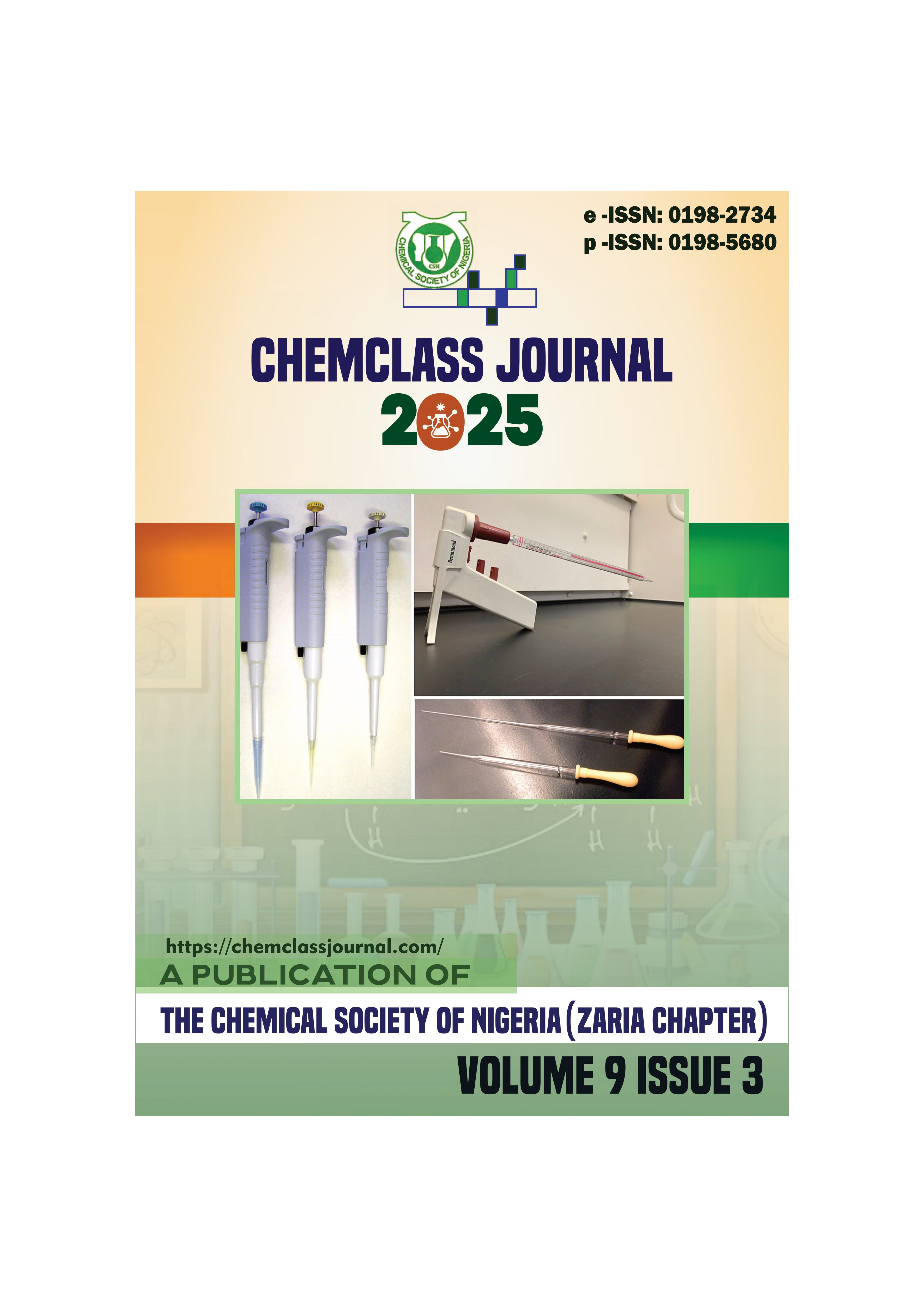Speciation and Bioavailability of Potentially Toxic Elements (PTEs) in Soil and Water Samples Obtained from Jos, Nigeria
DOI:
https://doi.org/10.33003/Keywords:
Bioavailability , concentration , environmental risk , health risk , Soil, water , speciationAbstract
The study investigated the speciation and bioavailability of potentially toxic elements (PTEs) in soil and water samples from Jos, Nigeria. The results revealed significant contamination of soil with Pb, Cd, Hg, As, Cr, and Co, as well as elevated levels of Zn, Cu, Fe, Mn, Ti, Sr, and Zr. Water samples also showed contamination levels exceeding the Nigeria industrial standard (NIS) for raw water. Speciation analysis indicated consisted pollution patterns in the different fractions across study sites, revealed distinct associations: Co, Mn, Fe, and Cr were predominantly bond to the Fe-Mn oxide fraction, whereas Ni, Ti and Zr were mainly associated with the residual fraction. In contrast, Pb, Cu, and Cd were largely associated with the organic and exchangeable fractions, and Sr was primarily linked to the carbonate fraction. Pb, Zn, Cu, Fe, Mn, Co, Hg, and Sr exhibiting high mobility and potential bioavailability, while As, Ti, and Ni showed moderate mobility. These findings highlight the environmental and health risks associated with PTE contamination in Jos, emphasizing the need for comprehensive risk assessments and remediation strategies to mitigate these risks and promote environmental sustainability.





 ChemClass Journal
ChemClass Journal
